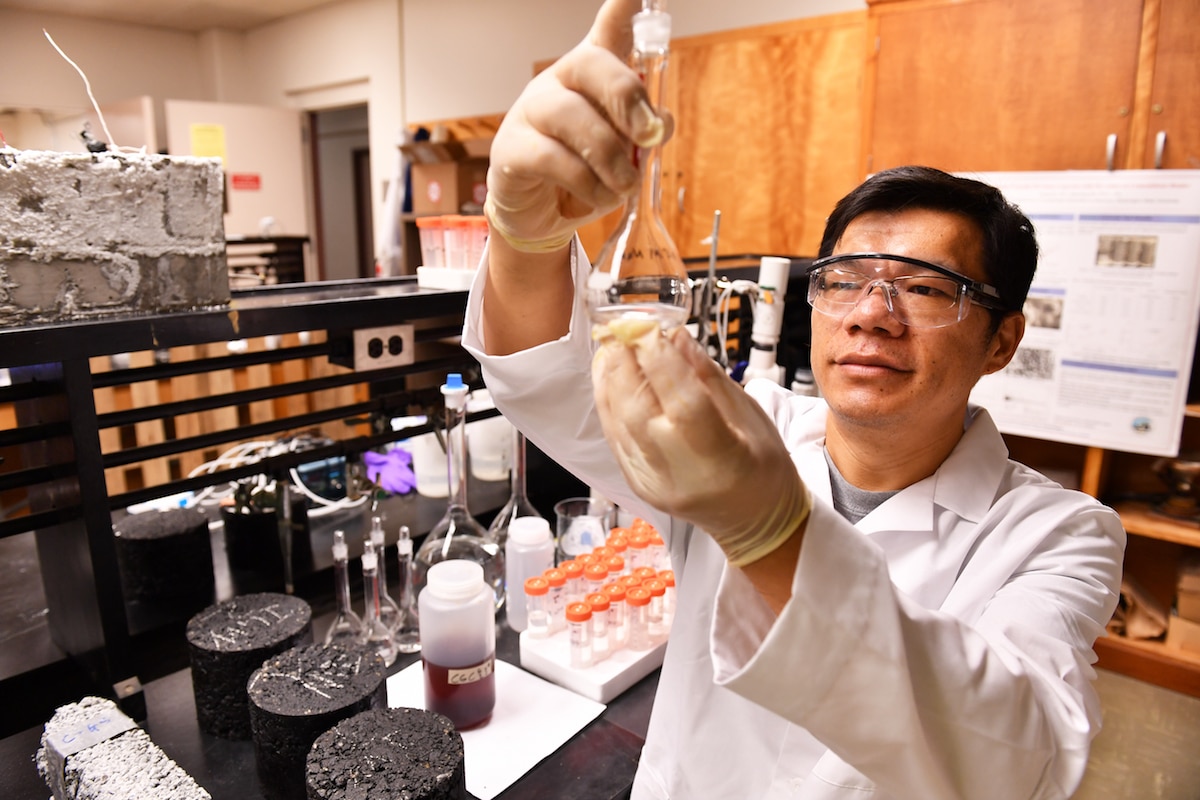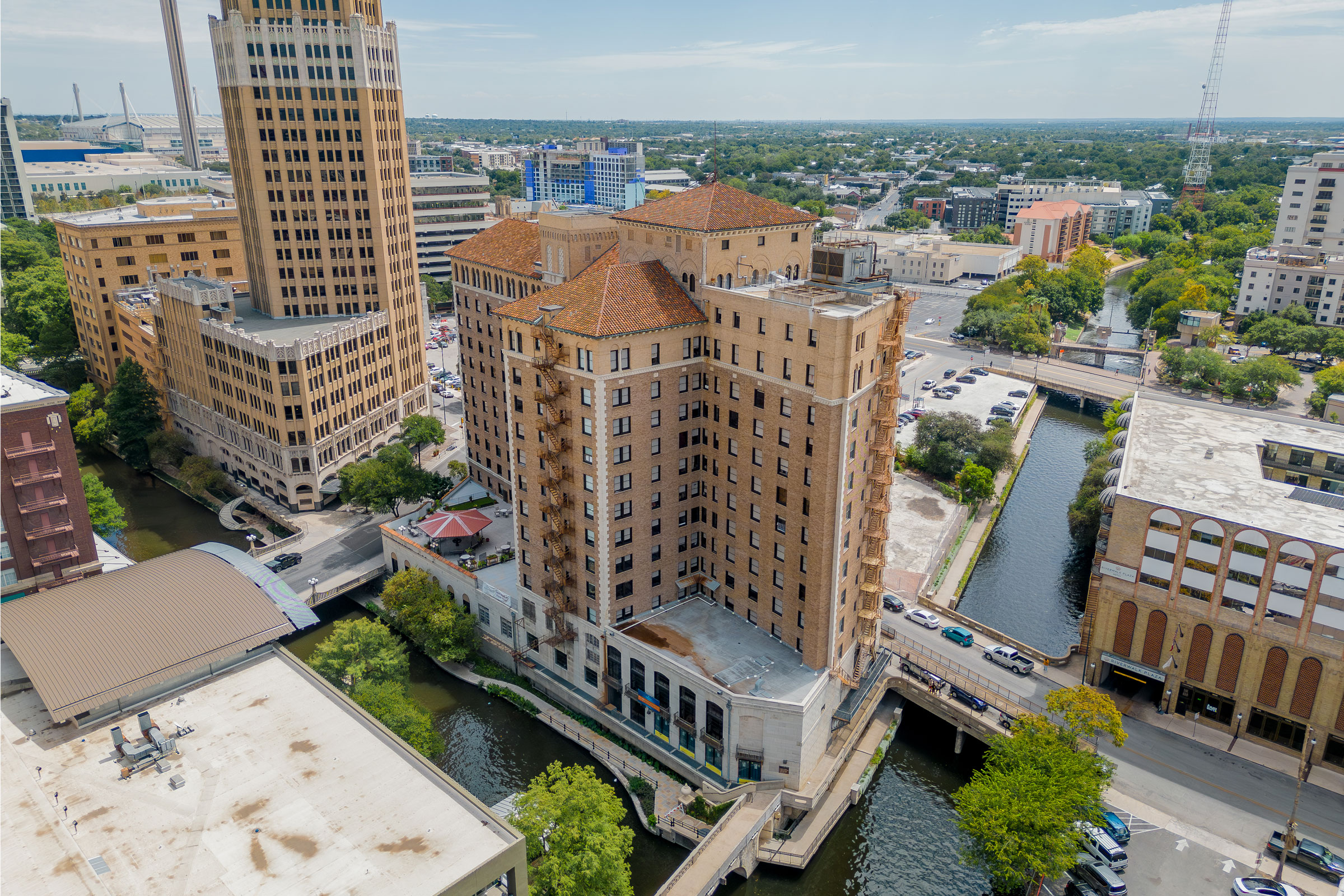Story at a glance:
- A Washington State University professor discovered a unique concrete binder made of coal fly ash, an industrial byproduct.
- Each year roughly 70 million tons of coal fly ash are produced in the US and only about 40% of that is being used, meaning 60% ends up in landfills.
- Researchers are exploring the nano-engineering of high-volume fly ash concrete that is 60% fly ash and 40% cement.
- Researchers could extend the “green” binder to impervious concrete and shotcrete.
Cement is far from green, but it’s the most common binder ingredient used to create concrete. Producing cement requires large amounts of fossil fuels to generate heat and in turn releases a lot of greenhouse gases into the atmosphere. That’s why researchers are currently developing cleaner ways to make concrete—without the use of cement.
Xianming Shi, associate professor of civil and environmental engineering at Washington State University (WSU), has discovered a unique concrete binder made of coal fly ash, an industrial byproduct.
By combining fly ash with a recently discovered nanomaterial called graphene oxide, Shi and his team have eliminated the need for heat and cement for producing concrete. This permeable concrete research puts waste to work, making the production process, and the concrete itself, more sustainable.
gb&d: How did you get interested in this type of research?
Xianming Shi: I got my Ph.D. in chemistry from the Chinese Academy of Sciences. In China I saw the incredible rate of development, but I also noticed the significant pollution. I thought, “Why not use waste to satisfy the need for more building materials?” I started my research from there. In the U.S., we have less pollution, but we still have significant problems with industrial byproducts, like coal fly ash.
gb&d: How does your concrete production method differ from traditional concrete production?
Shi: The true innovation is the geopolymer binder itself. Basically, it has no cement clinker, or the traditional binder unit. It’s different from other geopolymers because it doesn’t require the addition of sodium hydroxide or the use of heat treatment. Most geopolymers require heat, which prevents them from being used in field construction.
gb&d: How did you develop this process to not require any heat?
Shi: We studied the hydration chemistry of fly ash concrete and explored different types of coal fly ash. We found that most fly ashes did not fully participate in the hydration process because they are like reactive aggregates—only the surface reacted but the core did not. Then we added graphene oxide, and we found that it can serve as a catalyst for this reaction. It also increases the strength properties and completely changes the hydration chemistry. Traditional hydration products are more like a linear polymer, but once you add graphene oxide, it turns into a network structure, or a geopolymer.
gb&d: How has fly ash been a waste management issue in the US?
Shi: Each year roughly 70 million tons of coal fly ash are produced in the U.S. and only about 40% of that is being used, meaning 60% of it ends up in landfills. Fly ash poses a significant risk in terms of air pollution or contamination of land resources. There is also the potential risk of trace amounts of heavy metals dissolving into the groundwater.
gb&d: How does your research improve green building techniques and groundwater management?
Shi: Pervious concrete in recent years has been a prominent tool in low-impact development. It has many environmental benefits in reducing stormwater quantity and peak flow, improving stormwater quality, and recharging the groundwater through the infiltration function.
Permeable pavements simulate the natural environment because you’re allowing pavement to breathe. Impervious pavement, or what we call “grey” infrastructure, doesn’t have that function, so you end up having issues with peak runoff, erosion, and hydroplaning.
With pervious concrete, you have less runoff and better traffic safety. There is also less traffic noise and less urban heat island effect. In general, it is a greener pavement design. In our research, we also remove the use of cement to further reduce the carbon footprint. Cement requires significant energy and a larger footprint. If we’re using waste to replace cement, it’s like killing two birds with one stone.
gb&d: How do you hope to expand this research in the future?
Shi: There are many opportunities for further greening the industry, but it takes more than just the technical expertise—it also takes the community as a whole to support it. It all depends on funding. We’re currently exploring the nano-engineering of high-volume fly ash concrete that is 60% fly ash and 40% cement, and we recently implemented geopolymer pervious concrete demonstration plots on WSU’s campus. We could extend the “green” binder to impervious concrete and shotcrete. Future research would also look into how this binder could be used for reinforced concrete structures that are better protected from corrosion.





